-
smallstreams.com supporter and plankowner

Another Colorado high country report
Here's another report from last summer's fishing. Pardon the "instructional" tone of some of the article, I wrote it largely in response to a question about brook trout from a local KS flyfisher.
Creede, CO has a little 5K run called the Snowshoe Shuffle that is scheduled the first Saturday in August. This year was the 25th running of the race. It's a 5K race that goes uphill for the first half and downhill for the second half--of course this is at 9,000 feet which challenges this flatlander. I hadn't planned on running it this year but since I did win my age group a couple of years ago so I thought I'd best "defend" my title. Oh, did I mention I also took last in my age group? Yep, I was the only runner my age. At any rate as I was heading downtown to register for the race early in the morning I happened upon this fly, laying on the sidewalk in front of the fly shop.
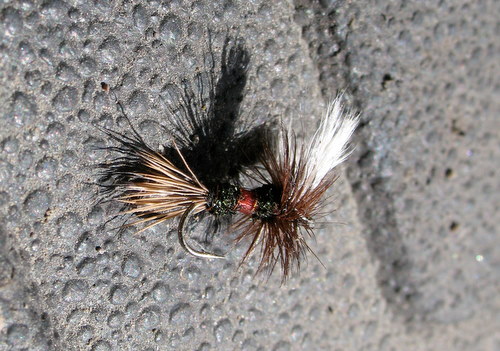
This is the classic attractor, the Royal Wulff is also known as a brookie killer. It was the fly that enticed my first trout caught flyfishing--a brook trout of course. You may not be able to see it but there hint of tippet still attached. Finding the fly inspired me to target brook trout after the race. I stashed the fly and went on to register for and run the race. Unfortunately, my age group was well represented this year in the race--I had to settle for fourth this year along with the good feeling that comes from just surviving a run at altitude.
Now, the question was: "Where to fish?" I could go upstream from Creede to some beaver ponds where I caught my first brook trout on a fly rod oh so many years ago or I could head for one of the small streams that flow out of the various wilderness areas in this part of Colorado. I chose the later, I come to Colorado each summer to fish moving water. I chose a small, nearby stream that required 10 miles of dirt road and a short 2 mile hike in to the wilderness area. That 2 mile hike pretty much guarantees the fish will not be pressured and the brook trout run larger than average in this creek. It could be because, this stream (at 11,000 ft) is spring fed and allegedly doesn't freeze in the winter---don't know for sure because I haven't been there to check.
Ready to go with my new wading sandals that I really love for this type of fishing.
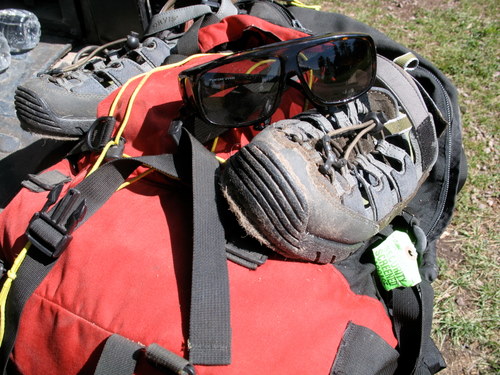
Here's a few snapshots of the hike in.


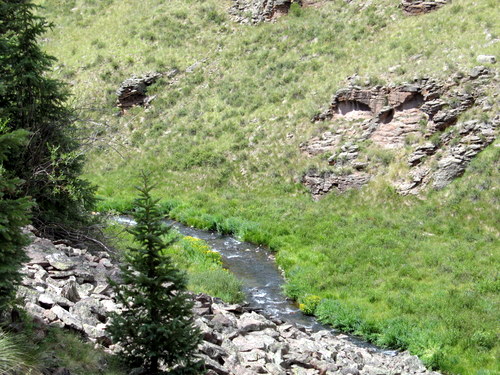
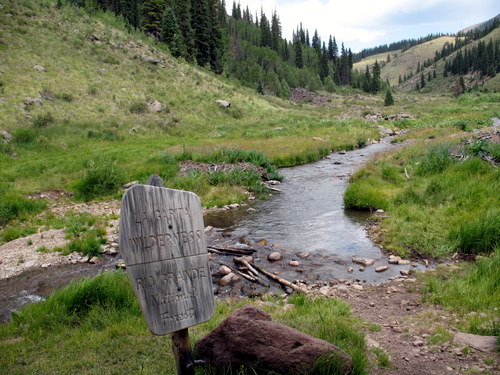
I mentioned that my first trout (char) on a fly rod was a brookie. Brook trout are not native to Colorado (they are endemic to eastern North America) but they have become so ubiquitous in the small streams that they make a perfect fish for the beginning flyfisher. They are kind of the green sunfish of Colorado---they are everywhere in small water and easy to catch. As an example, last year at one beaver pond, standing in one spot, I caught thirty 6-8 inch brookies. I've always fished for brookies with dries--they aren't picky.
When you arrive at the creek, you first notice this small run that is deeper than most because the hikers have tried to create a rock bridge across the stream.
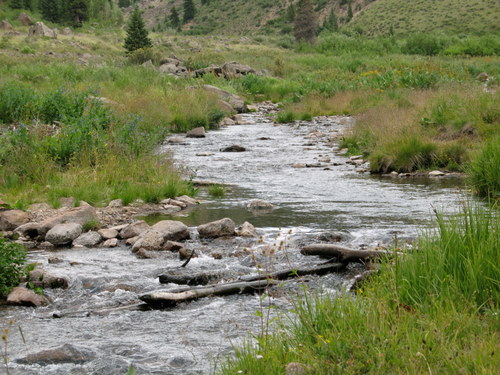
The bridge doesn't work well as a bridge but it sure makes a nice pool for brook trout. Looking over this pool, I saw several trout surface feeding on these.
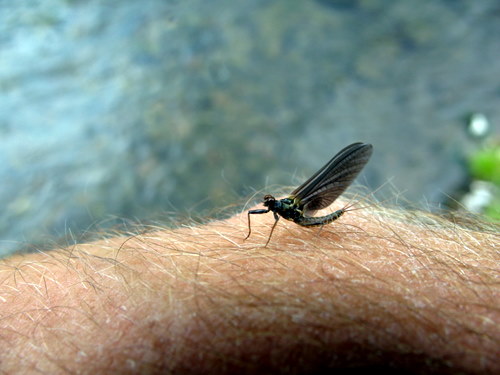
Perhaps, I should have fished an Adams but I had come to fish the Royal Wulff I found--hoping for some sort of magic, I guess. I rigged up my new 3 weight started to fish the pool.
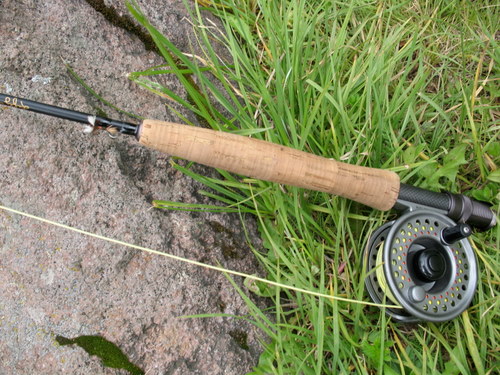
I started at the tail end of the pool and missed the first couple of strikes. These high mountain stream trout are very quick and you have to be too if you are going to catch them. This is one reason you need sunglasses--you can spot the rise earlier and anticipate the strike. A couple of years ago on a similar stream a buddy I was fishing with forgot his glasses and he simply could not see the fly or the trout rising to the fly in time to do anything. After the first two misses, I was back in snych and quickly started catching several brookies. I caught about 12 out of this pool before they stopped hitting. Brook trout may not be big (in small streams in CO) but they make up for it with some of the most unbelievably beautiful coloration. Here are some picts (mostly of the same fish):
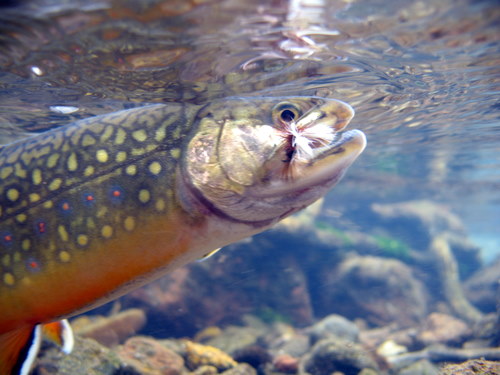
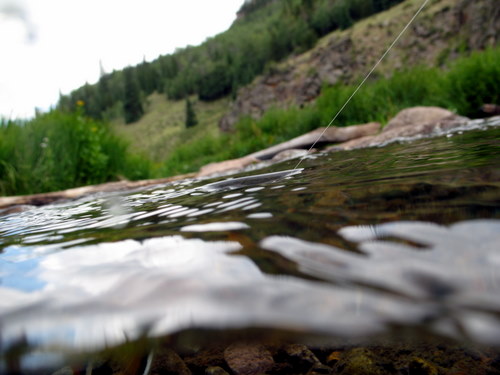

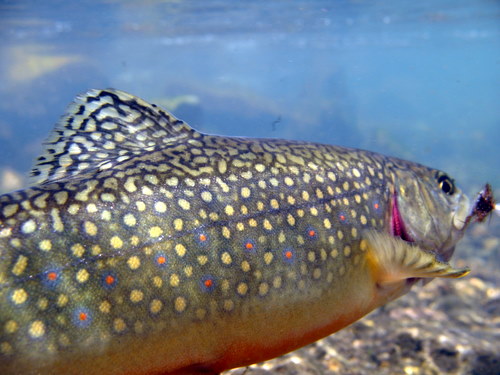
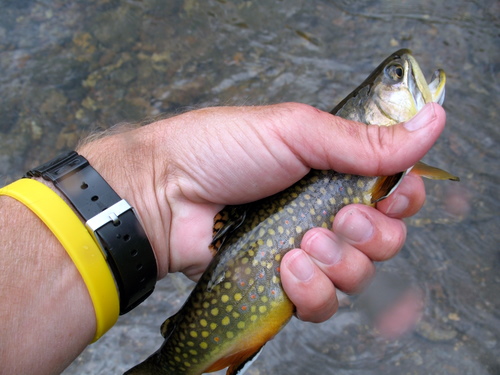
I moved downstream (usually I go upstream) and tried some other types of runs and pocket water. Here's a nice brookie that I caught by swinging the Royal Wulff within a couple of inches of the mossy bank.
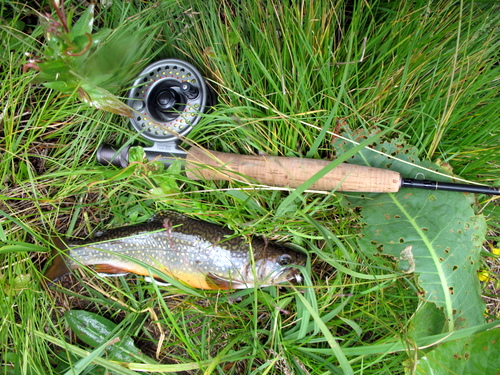
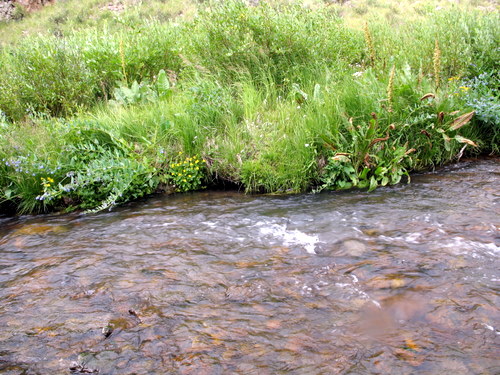
This is what happens to brookies that are not skitish enough. (note the mayfly resting on the carcass to the right).
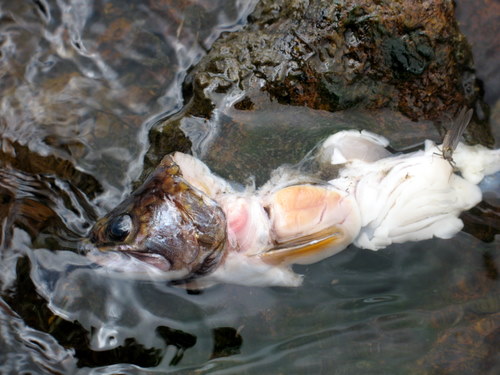
After enticing more than a dozen brookies the Royal Wulff was pretty much in tatters so I switched to a parachute Adam's

By this time I was able to go back to the original pool to fish--just as a another hiker from Olathe, KS came by. He waded through the pool while asking me how the fishing was. Despite his wading the fish continued to rise. I pointed out the rising fish and kept my cool hoping he hadn't spooked the fish. Since I now had on the parachute Adam's I figured I could start catching them again--sure enough.
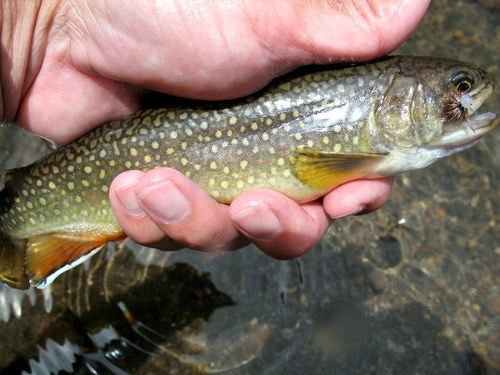
All this happened in less than an hour and I was contented. I explored a bit upstream for future reference and then hiked out with a calm serenity that the high country seems to bring out in me. Earlier I mentioned the beaver ponds above Creede. Later in the day, I thought I'd drive up and take a picture of the pond where I caught my first brook trout on the Royal Wulff. Look closer and you'll notice the rings of rising trout. They are still there, all these many years later.
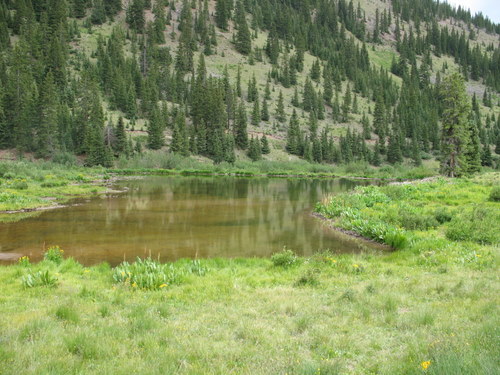

As the rings faded, a long forgotten memory came to me. I saw my son fishing the pond....where he caught his first trout, a cooperative brookie, on his new fly rod, more than 15 years ago--and you already know the fly.....yes, it was a Royal Wulff.
BW
(originally, posted on a local club site---resubmitted here, with some minor edits)
 Members who have read this thread: 0
Members who have read this thread: 0
There are no members to list at the moment.
 Posting Permissions
Posting Permissions
- You may not post new threads
- You may not post replies
- You may not post attachments
- You may not edit your posts
-
Forum Rules

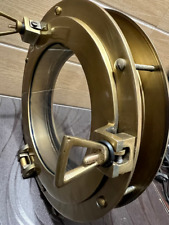
Brass Porthole Window Boat Porthole Window Door Window Glass Porthole
$116.00
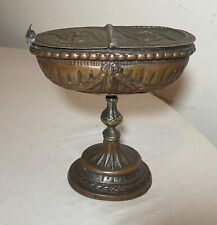
antique 18th century handmade copper brass bronze Incense censor Thurible Boat
$559.99
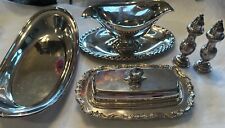
Lot 4 silver plated serving dishes butter gravy Boat Salt & Pepper Shakers
$37.80
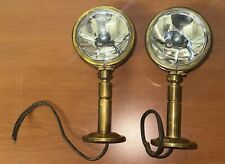
Quality Brass Nautical Maritime Boat Mini Ship Antique Spot Light x (2) Set Lot
$844.99
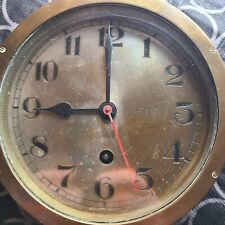
Pre WW 2 (1937) German Kieninger & Obergfell U-boat Clock Rare Find Works Runs
$2900.00
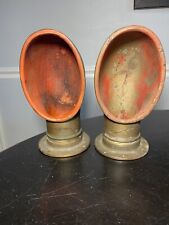
Pair of Large 9 1/2" Brass Maritime Ship Boat Dorade Cowl Vent Intakes
$198.00
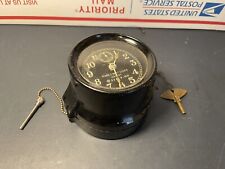
U.S. Navy Mark I Boat Clock WWII 1941
$285.00
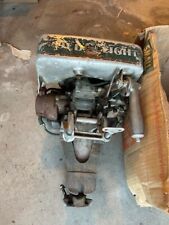
Antique 1930 Evinrude boat motor, 2 cylinder, 2 HP, Model is Fold Light
$350.00
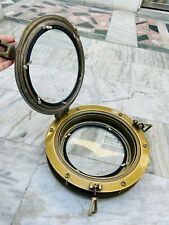
Vintage Antique aluminium 12"Canal Boat Porthole Door Window Round Glass Home
$149.11
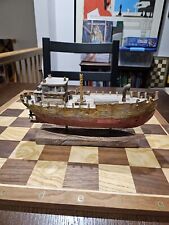
Folk Art - Tug Boat - Grey & Red - Hand Crafted Collectible
$261.75


























 Reply With Quote
Reply With Quote











Bookmarks